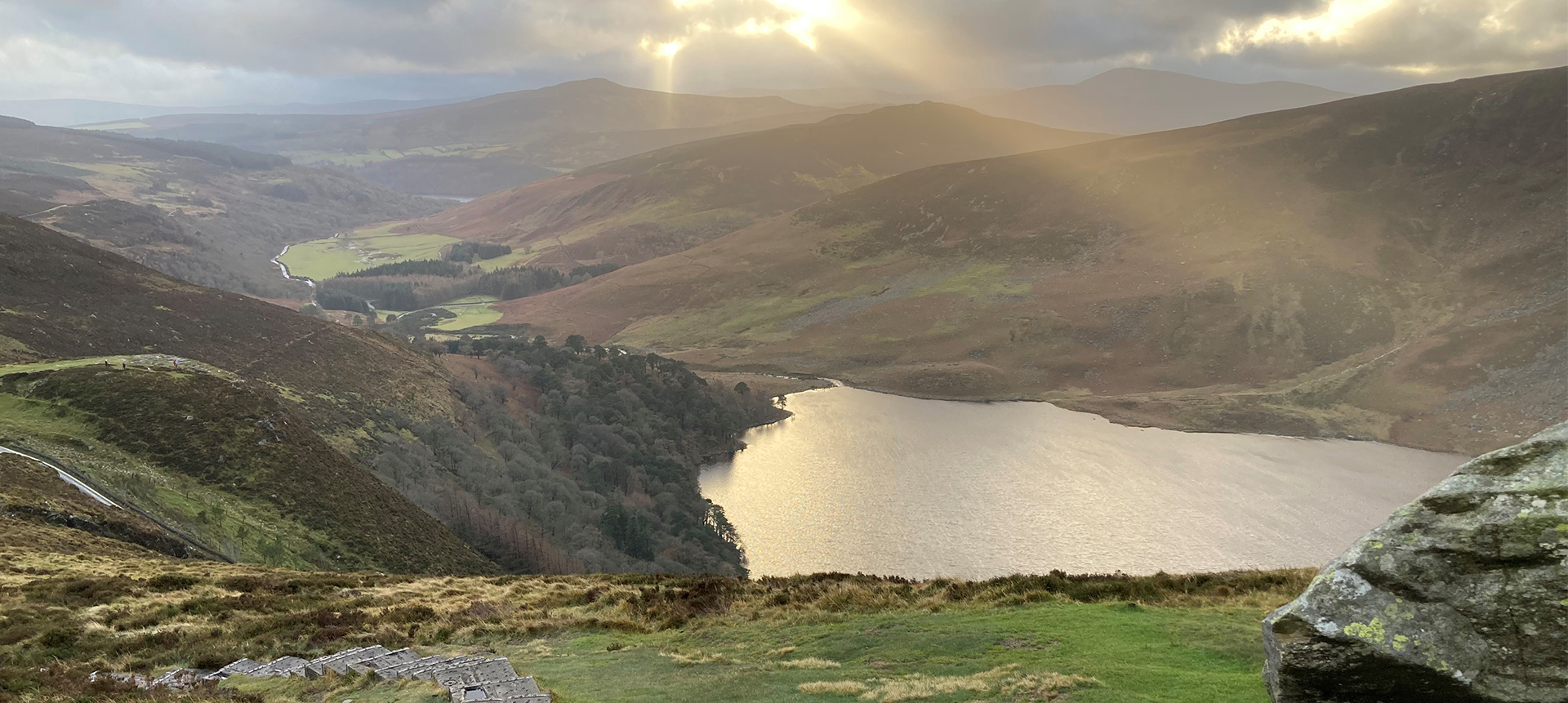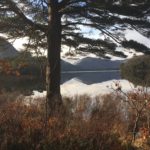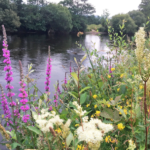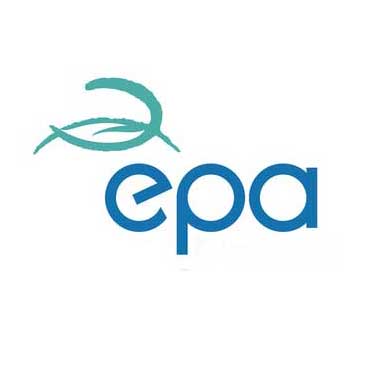The speakers and talks have been announced for the 2022…
Farming for Water Case Study
Willow Beds – A nature-based solution to reduce overland runoff and pollution in Kerry
The Farming for Water Project is funding an innovative willow bed on the land of Mike and Bernie O’Sullivan, Cordal, Castleisland, Co. Kerry. A willow bed is an area of densely planted willow trees, and this nature-based solution will help slow the flow of water, allow sediment to settle and prevent any dissolved nutrients from ending up in the surrounding water courses, primarily the River Maine, a Priority Area for Action identified in the second cycle River Basin Management Plan.
Mike and Bernie, who milk 135 cows on their family farm, worked with Kerry Agri Business Sustainability Advisers Terry O’Mahony and Caolfhionn Dodd to explore the Farming for Water EIP concept. They decided to introduce additional measures to enhance their farm’s sustainability and environmental friendliness.
“Protecting water quality is very important and even just for peace of mind for us when the inspectors are coming, it is good to have everything in order. This is a great project and the key to it is that the funding is right. You have to have the funding in place, and I must say it has been a very straight forward process for us because the advisors have been so pro-active.”
Mike O’Sullivan
The first step was devising a Rainwater Management Plan, a whole farm assessment to identify water flow areas within the farmyard and land. This assessment is crucial for pinpointing suitable locations for mitigation measures. The measures introduced include:
- Holding off on slurry and chemical spreading until April in critical source areas
- Roadway run-off management and sediment traps
- Introduction of solar pumps in an out-farm
- Planting 16 acres of multi-species swards
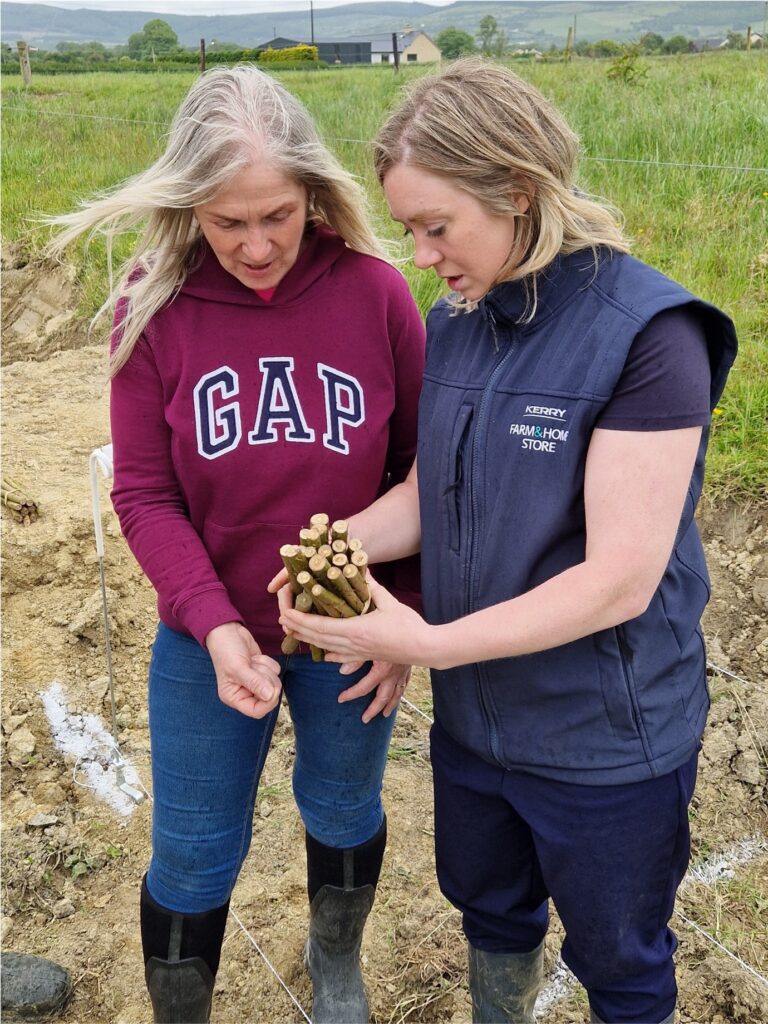
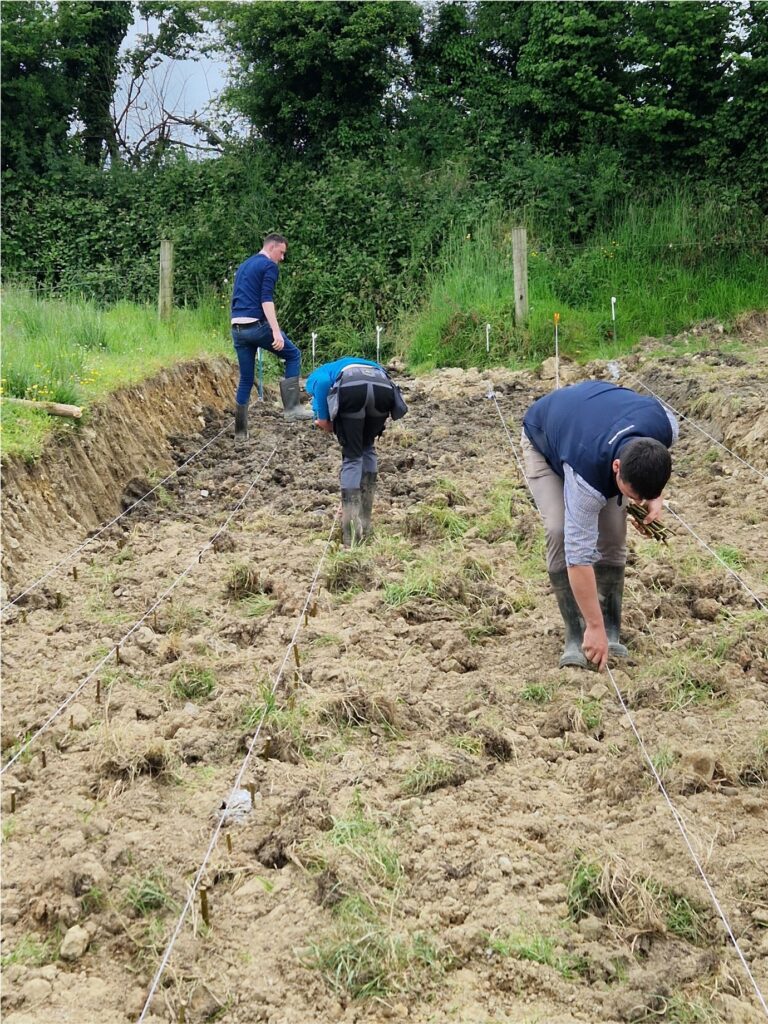
“I see this as a huge opportunity to put our property in order for our children coming along after us. I feel it is a very good initiative and I have learned a lot from it. The aim is that other farmers will be able to come to my farm, observe the work and follow suit on their own farms. It is a no brainer really.”
Mike O’Sullivan
Construction of the willow bed took less than two days. The bed, measuring 100 x 4 meters, was dug out by an excavator, with topsoil reused and subsoil moved to another part of the farm. The 1050 willow plants were sown in six rows, 0.7 meters apart, and 50 cm between each stem. These will need to be cut back after a year and harvested every third year thereafter, or every seven years if used for firewood. The impact of the willow bed on the farm will be significant, enhancing the landscape and land quality.
“Willow beds are a nature-based solution that contribute positively to the challenges that lie ahead. They help improve water quality, provide renewable energy production, enhance biodiversity, and help mitigate against climate change impacts through carbon sequestration and can help increase resilience to flooding”. We will be monitoring the effectiveness of this measure throughout the life cycle of the project through our Research Hub”
The Farming for Water Project Team
Water from the clean concreted areas of the farm will be directed through a sediment trap towards the willow bed, allowing water to settle and be polished. The willow beds slow water flow, let sediment settle, and enable growing vegetation to absorb dissolved nutrients through evapotranspiration.
In Ireland, water shortage rarely limits willow growth. Calculations indicate that a growing season annual precipitation level of 550-600mm is optimal for willow growth.
“It will be a real feature on our farm. It will be great to see it growing and having an impact on the landscape as well as on the land itself. I can see nothing but benefit from having introduced this measure. Nobody made me do it – it was a voluntary action but the fact that it is funded makes it very attractive.”
Mike O’Sullivan
Noel Dundon, Farming for Water EIP Communications and Engagement Lead
Learn more
Full Story: Willow bed project is “a no brainer” – Farming for Water EIP
Farming for Water European Innovation Partnership – Farming for Water EIP
Original Article – 2024 Catchments Newsletter
TEAGASC Signpost Series – Farming for Water EIP

